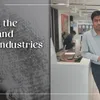The need for innovation in the textile industry
In offsetting its huge carbon trail, the textile industry must embrace innovation across the entire value chain to ensure long-term sustainability.
As per the UNEP (United Nations Environment Program), globally, the fashion industry leaves a deep footprint on the environment. The statement is backed by some startling statistics. It requires 7,500 litres of water to produce a pair of jeans.
The clothing industry utilises 93,000 billion cubic metres of water annually, enough for 5 million people’s survival. It also accounts for 20 percent of the total water wasted worldwide. Producing clothing and footwear leads to 8 percent of GHGs (greenhouse gases). Each second, a quantity of textiles equal to a garbage truck is burned or buried.
No doubt, the era of fast fashion has led to an accelerated rise in these negative outcomes. Against this backdrop, the WWF (World Wide Fund for Nature) issued a clarion call years earlier for a shift towards slow fashion or a sustainable clothing and textile industry.
Heavy ecological footprint
The WWF cautioned that the textile industry’s ecological footprint was simply not sustainable, with the sector emitting 1.7 billion tonnes of CO2 and producing 2.1 billion tonnes of waste per year. Worse, the sector needs many toxic chemicals, particularly during processing, often severely damaging the water basins, soil and local biodiversity.
Additionally, 2.1 billion tonnes of wastes are produced annually, such as off-cuts or disposed clothing, out of which only 20 percent are recycled. As per the global average, each person purchases 5 kg of clothes each year. In Europe and the US, however, the number runs as high as 16 kg.
Going by the above, there’s a clear-cut case for innovation in the textile industry to curb its carbon footprint. For the naysayers or those who believe this may not make much business sense, here’s some food for thought.
A Boston Consulting Group study shows that the profit margin of brands could drop by a minimum of three percentage points by 2030 because of rising costs of raw materials, energy and labour if companies continued with business as usual. The colossal loss in profits for the industry needs no elaboration.
Even for those willing to change, there is a message. The time for mere efficiencies and incremental changes is long over.
To meet the overwhelming challenges, the textile industry should undertake transformational changes at scale backed by broad innovations if mandated Sustainable Development Goals are to be achieved by 2030.
Triple Models of Innovation
The WWF report highlights examples of industry frontrunners who are investing in innovations across process, product and business models. The first-movers are guiding the industry out of its linear ‘make-sell-dispose’ approach towards business models that are more circular and eco-friendly.
Business model innovations cover reduction, reuse, repair, recycling, and sharing. It transforms the way business is undertaken and value is generated by attempting to drastically limit the resources and material inputs required in the industry’s value chain and minimising the ecological impact of its activities. The new model adheres to the principles of sufficiency and a circular economy.
While the former follows reductionist strategies of producing/consuming less and slowing down, the circular economy aims at closed-loop models, repairing and a sharing economy.
Other innovations include ‘product as a service’ or the concept of renting clothes instead of selling and re-materialisation or sourcing of materials from recovered waste, among other innovations.
Examples of business model innovation include specialised recycling entities such as Tell-Tex and I:CO, which collaborate with companies to collect their clothing for recycling and reuse. Then there is cotton recycling or re-looping fashion, which denotes remanufacturing old cotton garments into new material while maintaining the quality of reproduced fibres. Thanks to the closed-loop value chain, the value of the material is maintained, waste eliminated and water consumption reduced.
Where product innovation is concerned, this comprises recycled content and more sustainable raw materials. This produces better products, e.g., through certified raw materials and manufacturing and recycled content.
An example of product innovation is Chetco or Chetna Coalition, which has set up and maintained market access for thousands of Indian farmers who produce Fairtrade cotton, which is organic. Then there is TENCEL®. This is a lyocell fibre from Lenzing that is extracted from wood. Due to its closed-loop system, fibre production itself remains eco-friendly.
Whereas process innovation includes transparency, renewable energy sourcing and other innovative processes. This leads to manufacturing processes having a reduced ecological trail, especially vis-à-vis energy, GHG emissions, chemicals and water.
Process innovation is exemplified by Nike’s ColorDry – a technology to dye fabric without water by using CO₂ in the dyeing process. This saves millions of litres of water in Nike’s supply chains. Companies such as Levi’s and Adidas are also promoting waterless dyeing. Then there is Patagonia’s Archroma Advanced Denim Technology.
An innovative dye process, it colours denim with sulphur dyestuffs that bond easily. Unlike conventional denim dyeing processes, this method results in shorter production lines needing 30 percent less energy and 84 percent less water while emitting 25 percent less CO2.
Finally, it is apparent companies can do a lot to make sustainable fashion a reality. But consumers can also contribute their mite in the common cause of slow fashion by reusing and renting garments.
Some big brands are already implementing programmes encouraging users to deliver travel clothing. In exchange, they receive bonuses or, in some cases, have new clothing made from their old pieces.
These merely represent the tip of the clothing industry’s global innovation drive. Undoubtedly, in the common cause of the planet’s survival, it’s high time that the people and industry players all join hands in promoting a sustainable textile industry.
Edited by Saheli Sen Gupta
(Disclaimer: The views and opinions expressed in this article are those of the author and do not necessarily reflect the views of YourStory.)








